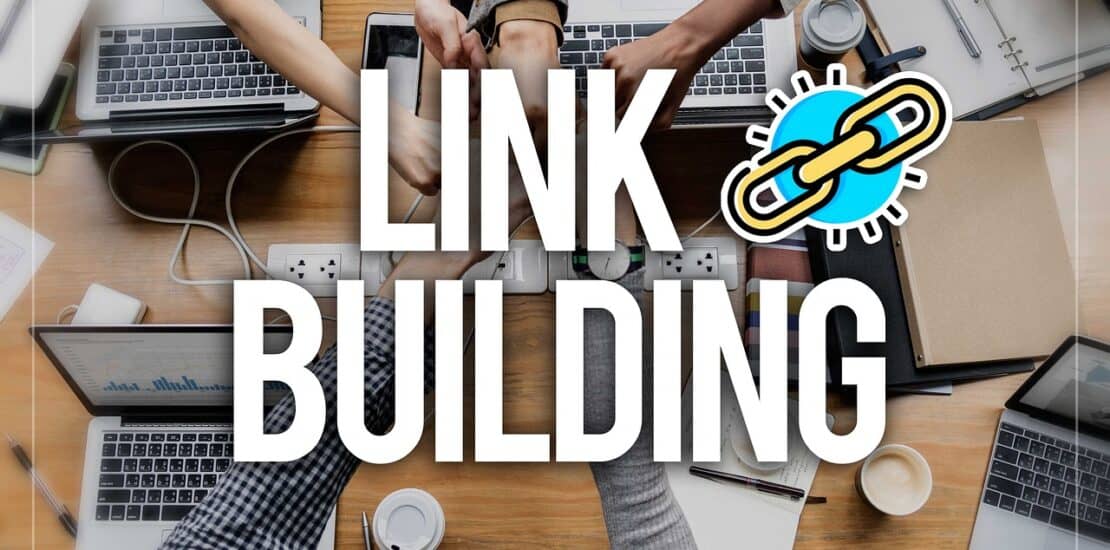How to do link building for SEO
In this article, we’ll walk through the basics of link building for SEO, explore various strategies, and offer practical tips to help you increase your site’s visibility. Building links is an essential part of improving your website’s search engine optimization (SEO). When done correctly, link building helps search engines understand the relevance and authority of your site.
Understanding Link Building for SEO
Link building is the process of acquiring hyperlinks from other websites to your own. These links, known as backlinks, serve as votes of confidence from other sites. They tell search engines that your content is valuable and trustworthy.
The Concept of Backlinks
Backlinks are essentially digital endorsements. When another website links to yours, it’s akin to a professional colleague vouching for your expertise in a public setting. These endorsements are crucial because they help search engines establish the credibility and relevance of your content.
Backlinks are used by algorithms like Google’s PageRank to assess the importance of your website. The more quality endorsements you have, the higher your pages are likely to rank. This is because search engines interpret these links as signs that your content is useful and authoritative.
Types of Backlinks
Not all backlinks hold the same value. There are several types of backlinks, ranging from the highly valuable to the less effective. Editorial backlinks, which are naturally earned when other websites link to your content without prompting, are the most valuable.
Nofollow links, on the other hand, are tagged to tell search engines not to pass on any link equity to the linked site. While they don’t directly contribute to your page’s ranking, they can still drive traffic and offer other indirect SEO benefits. Understanding these nuances helps in strategizing effective link building efforts.
Evaluating Backlink Quality
To truly harness the power of backlinks, it’s crucial to focus on quality over quantity. High-quality backlinks often come from authoritative and relevant sites within your industry. The context of the link, anchor text used, and its placement on the page also play a significant role in determining its quality.
Assessing a backlink’s value requires a keen eye for detail and understanding of metrics such as Domain Authority (DA) and Page Authority (PA). Tools like Ahrefs and Moz can provide insights into these metrics, helping you prioritize your link building efforts effectively.
Why Are Backlinks Important?
Backlinks can drive traffic to your site, improve your search engine rankings, and increase your site’s authority. When other reputable sites link to your content, it signals to search engines that your site is a valuable resource. This can lead to higher rankings and more organic traffic.
Additionally, backlinks can introduce new audiences to your content. When users find your site through a link on another website, they may explore your content further and become regular visitors.
Effective SEO Link Building Strategies
There are several strategies you can use to build links for SEO. Here, we’ll cover some of the most effective methods.
1. Create High-Quality Content
Creating valuable, informative, and engaging content is the foundation of any successful link building strategy. When your content is useful and relevant, other sites are more likely to link to it. Focus on creating content that answers common questions, solves problems, or provides unique insights.
Types of Content to Create
To maximize your link building potential, diversify the types of content you produce. Long-form articles, in-depth guides, and comprehensive tutorials often attract more backlinks due to their thorough nature. Infographics and videos can also be effective, as they present information in an engaging, easily digestible format.
By experimenting with various content types, you can appeal to a broader audience and increase the likelihood of earning backlinks from different sources.
Research and Originality
Research plays a crucial role in creating content that stands out. Original research, case studies, and data-driven insights can set your content apart from competitors. When you offer unique information or perspectives, other sites are more inclined to reference your work, thereby increasing your backlink potential.
Ensuring your content is thoroughly researched and offers something new to the conversation can significantly enhance its link-worthiness.
Content Promotion
Creating high-quality content is just the first step; promoting it effectively is equally important. Utilize your social media channels, email newsletters, and collaborations with influencers to get your content in front of the right audiences. The more visibility your content has, the greater the chances of it being linked to by other websites.
Being proactive in content promotion helps in establishing your presence and authority in your niche, making link acquisition more organic.
2. Guest Blogging
Guest blogging involves writing and publishing articles on other websites in your industry. This strategy allows you to reach new audiences and earn backlinks to your site. When guest blogging, focus on providing high-quality content that is relevant to the host site’s audience.
Identifying Guest Blogging Opportunities
Finding the right platforms for guest blogging is crucial. Look for reputable blogs and websites within your niche that have a strong readership and engagement. The alignment between their audience and your expertise is vital to ensure the content you provide is relevant and engaging.
Use tools like BuzzSumo or Google searches to identify potential guest blogging sites. Pay attention to their guest post guidelines and submission processes.
Crafting a Compelling Pitch
Your pitch to a potential host should be concise, informative, and demonstrate the value you can offer their audience. Highlight your expertise, propose unique topic ideas, and show familiarity with their content. A well-crafted pitch not only increases your chances of being accepted but also establishes a positive first impression.
A personalized approach in your pitch can significantly boost your chances of securing a guest blogging opportunity.
Writing and Submission
Once your pitch is accepted, focus on creating a high-quality piece that meets the host site’s standards. Follow their editorial guidelines closely and ensure your content is engaging and informative. After submission, maintain communication with the host to facilitate any revisions and eventual publication.
Guest blogging is not just about acquiring backlinks but also about building relationships and reputation within your industry.
3. Build Relationships
Building relationships with other industry professionals can lead to valuable link building opportunities. Engage with influencers, bloggers, and website owners in your niche through social media, email, and industry events.
Networking Through Industry Events
Attending industry conferences, webinars, and networking events can provide opportunities to meet and interact with other professionals. These interactions can lead to collaborations, guest blogging opportunities, and mutual link sharing.
Building a network within your industry helps in establishing trust and credibility, paving the way for organic link building opportunities.
Engaging on Social Media
Social media platforms offer a dynamic space for interaction and engagement with industry peers. Participate in discussions, share valuable insights, and engage with content from others in your niche. These interactions can lead to relationships that open up opportunities for link building.
Being active and authentic on social media helps in building a recognizable presence that others want to engage with.
Email Outreach
Email outreach is a direct and personal way to build relationships. Personalize your emails, offering genuine compliments or insights related to the recipient’s work. Propose collaborations or share content that might be of interest to them.
Effective email outreach can lead to meaningful connections that facilitate link building and collaboration.
4. Leverage Social Media
Sharing your content on social media platforms can help you reach a wider audience and attract backlinks. When your content is shared and discussed, it increases its visibility and the likelihood of being linked to by other websites.
Choosing the Right Platforms
Different social media platforms cater to different audiences. Understanding where your target audience spends their time is crucial for effective content sharing. LinkedIn, Twitter, and Facebook are popular for professional and informational content, while platforms like Instagram and TikTok are more visual and informal.
Tailoring your content to fit the platform ensures maximum engagement and sharing potential.
Crafting Engaging Posts
The way you present your content on social media can greatly impact its reach and engagement. Use compelling visuals, catchy headlines, and concise descriptions to capture attention. Encourage discussions and interactions by posing questions or inviting opinions.
Engaging posts are more likely to be shared, increasing the chances of acquiring backlinks from interested audiences.
Building a Community
Fostering a community around your brand or content encourages engagement and sharing. Respond to comments, host live sessions, and create content that resonates with your audience’s interests and challenges. A loyal community is more likely to share your content and link back to it.
A strong community supports organic growth and enhances your link building efforts through genuine interactions.
Advanced Link Building Techniques
For those looking to take their link building efforts to the next level, consider these advanced techniques.
1. Broken Link Building
Broken link building involves finding broken links on other websites and suggesting your content as a replacement. Use tools like Check My Links or Broken Link Checker to identify broken links on relevant sites.
Identifying Broken Links
Begin by identifying websites within your niche that have broken links. Tools like Ahrefs and SEMrush can help you uncover these opportunities by analyzing competitor sites or authority sites in your industry.
Identifying broken links is the first step in offering a valuable solution and earning a backlink in return.
Crafting a Replacement Pitch
Once you’ve identified a broken link, approach the site owner with a courteous and informative pitch. Highlight the broken link and suggest your content as a replacement. Emphasize the relevance and value your content offers as a solution to their broken link problem.
A well-crafted pitch increases the likelihood of your suggestion being accepted and implemented.
Building Long-Term Relationships
Beyond fixing a single broken link, aim to build a long-term relationship with the site owner. Express your willingness to collaborate on future content or link exchanges. This approach fosters trust and can lead to more link building opportunities over time.
Establishing a rapport with site owners can extend your network and enhance your link building strategy.
2. Skyscraper Technique
The skyscraper technique involves finding popular content in your niche and creating something even better. Start by researching high-performing content using tools like Ahrefs or BuzzSumo.
Researching Existing Content
Identify content that has performed well in terms of backlinks and social shares. Analyze what makes it successful—whether it’s the depth of information, engaging visuals, or unique insights. This analysis will guide you in creating a superior version.
Understanding the strengths of existing content helps you build on those strengths and offer even more value.
Creating Superior Content
With insights from your research, develop content that is more comprehensive, up-to-date, or visually appealing than the original. Add unique perspectives, updated data, or enhanced visuals to set your content apart.
Superior content naturally attracts attention and increases the likelihood of acquiring backlinks from interested audiences.
Outreach and Promotion
After creating your skyscraper content, reach out to sites that linked to the original piece. Inform them about your enhanced version and suggest it as a valuable resource for their audience. Promote your content through various channels to maximize visibility.
Proactive outreach and promotion ensure your superior content reaches the right audiences and earns the backlinks it deserves.
3. Resource Page Link Building
Resource pages are dedicated pages on websites that list helpful resources related to a specific topic. These pages are often valuable link building opportunities.
Finding Resource Pages
Search for resource pages within your niche using search queries like “keyword + resources” or “keyword + links.” These pages are typically curated collections of valuable content related to a particular subject.
Identifying relevant resource pages is the first step in positioning your content as a valuable addition.
Crafting a Persuasive Pitch
Reach out to the site owners with a personalized pitch, highlighting the value your content adds to their resource page. Clearly explain how your content aligns with their audience’s interests and needs.
A compelling pitch can increase the likelihood of your content being included in their resource list.
Building Relationships with Curators
Establish relationships with resource page curators for ongoing collaboration. Offer to reciprocate by sharing their content or linking to their resources when relevant. This mutual support fosters a network of valuable link building opportunities.
Building a rapport with curators enhances your link building strategy and opens doors to future collaborations.
Tips for Successful Link Building
To maximize the effectiveness of your link building efforts, keep these tips in mind:
Focus on Quality Over Quantity
High-quality links from reputable sites are more valuable than numerous low-quality links. Prioritize acquiring links from authoritative sources that align with your content and audience.
Quality-focused link building enhances your site’s credibility and improves its search engine rankings.
Diversify Your Link Sources
Aim for a diverse range of backlinks from various types of websites, such as blogs, news sites, and industry directories. A diverse link profile appears more natural to search engines and reduces the risk of penalties.
Diversification strengthens your backlink profile and supports sustainable growth.
Monitor Your Backlink Profile
Regularly check your backlink profile using tools like Google Search Console or Moz to ensure you’re maintaining a healthy link profile. Identify and disavow any harmful or spammy links that could negatively impact your rankings.
Monitoring your backlink profile helps in maintaining its health and integrity.
Stay Ethical
Avoid black hat SEO tactics, such as buying links or using link farms, as these can lead to penalties from search engines. Focus on ethical and sustainable link building practices that prioritize value and relevance.
Adhering to ethical practices supports long-term success and preserves your site’s reputation.
Visit us to know more about SEO tips.
Link building is a crucial component of SEO that can significantly impact your site’s search engine rankings and visibility. By focusing on quality content, building relationships, and utilizing advanced techniques, you can create a robust link building strategy that drives results.
Remember to monitor your progress, stay ethical in your practices, and continuously seek new opportunities to earn valuable backlinks. With persistence and dedication, you’ll see your site’s authority and traffic grow over time.








